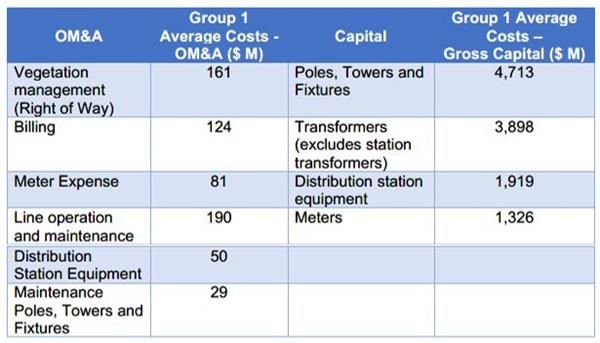On February 25, 2019, the Ontario Energy Board (OEB) staff released their Discussion Paper on Activity and Program Based Benchmarking (APB) For Electricity Distributors. The stated objective of APB is "to establish a framework to enable the comparison of utility cost performance in specific capital and OM&A activities/programs, thereby further helping OEB assess utility efficacy at delivering value to customers." OEB staff states that APB "will allow identification of best practices in key programs, peer cost comparisons and assessment of year-over-year continuous improvement based on key activities and programs."
As set out in the cover letter accompanying the Discussion Paper, APB is intended to be used as a tool for assessing the performance of regulated utilities, beginning with electricity distributors. According to the Discussion Paper, the OEB plans to use APB results to, among other things, evaluate/identify areas that may require detailed review in rate applications, support proportionate reviews of applications and inform other regulatory investigations. The Discussion Paper suggests that APB can also "guide individual distributors to seek increased cost efficiencies through adoption of best practices exhibited by the best performing distributors."
The Discussion Paper outlines the research and consultation process that has been undertaken to date, and then explains what OEB staff believe should be included in an APB framework. Key items to be taken into account include what activities/programs should be benchmarked, what methods should be used for benchmarking, what data is available and how it should be used.
It is the identification and assessment of particular activities that is said to make APB more useful than "Total Cost Benchmarking." OEB staff indicates that the plan is to benchmark only those programs/activities that contribute significantly to distributors' operations and customer service. In identifying the appropriate programs/activities, the OEB will consider the significance of the program/activity, materiality of the expense(s)/capital investment(s), the ease of data collection and comparability of the results between distributors.
Based on review of existing data and recommendations from experts and stakeholders, OEB staff have identified a preliminary short list of ten activities/programs for APB (six operating activities and four capital programs). The proposed items are set out in the table below, reproduced from the Discussion Paper.

As set out in the Discussion Paper, OEB staff proposes that APB be implemented incrementally with benchmarking, starting with some or all of the programs/activities listed above. OEB staff is proposing the use of both unit cost (including cost/volume) analysis and econometric modeling for benchmarking the selected activity/program candidates, with the emphasis on the unit cost method. The initial benchmarking will rely on existing RRRs and reported data. Additional data requirements and sources will be identified over time.
The Discussion Paper indicates that the OEB wants to move quickly with the implementation of the APB framework "given the benefits of this type of benchmarking to the regulatory process, the opportunities it presents to incent continuous performance improvement within the distribution sector, and the value it can deliver to utility customers." Therefore, it can be expected that further steps will quickly follow, indicating how the OEB plans to move forward. Notable in this regard is the comment in the cover letter that the OEB plans to implement APB for all regulated entities (including transmitters, OPG and gas distributors), using the framework developed for electricity distributors as the base. No mention is made as to how benchmarking will be undertaken where there are fewer participants for these other regulated activities.
OEB staff is holding a meeting/webcast on March 5, 2019 to give stakeholders the opportunity to ask questions about the APB initiative and the Discussion Paper. Interested parties are invited to provide comments on the Discussion Paper by March 27, 2019, including comments on the specific questions set out at Appendix A to the Discussion Paper.
The content of this article is intended to provide a general guide to the subject matter. Specialist advice should be sought about your specific circumstances.

